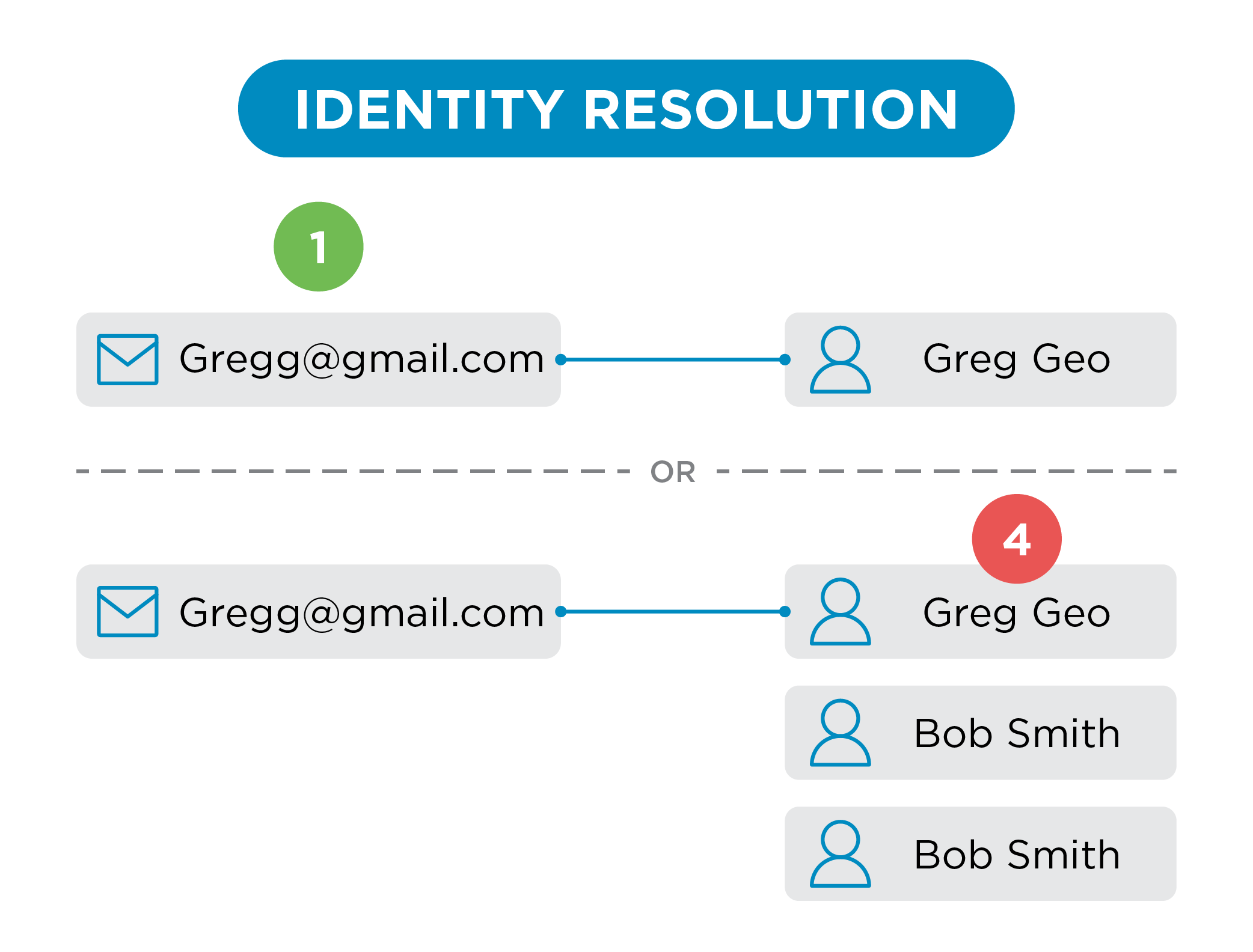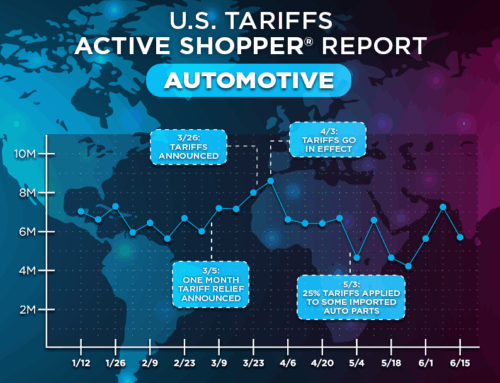Identity and Entity Resolution:
What are they and why do you need them?

Today’s topic is all about Identity and Entity Resolution. You’ve likely come across these terms as you’ve worked with DMPs, CDPs and other vendors in the auto space. But do you really know what they mean? For most of automotive, the answer is no. So, let’s take the opportunity to dive in to some questions around Identity and Entity Resolution.
What do the terms Identity and Entity Resolution actually mean?
The best way I know to explain Identity and Entity resolution, is by using an analogy. Let’s say a detective is at the scene of a crime. They luck out and are able to pull fingerprints from the crime scene. The detectives can then determine how many people were at the crime scene, based on the number of unique fingerprints. This is entity resolution. The crime lab matched 2 unique fingerprints to “unknown” real world entities.
Next, they might run those fingerprints through a crime database, which contains fingerprints of known criminals. This would be identity resolution. Where each fingerprint connects to an Identity. Ultimately using entity + identity resolution, the detectives connect the real world objects and their relationship together. Fingerprints to real humans in the database.
Now, let’s leave the detective world and connect it to dealerships. Most data points in a database link to a real world object (physical address, phone number, name, last name, email address, vehicle, etc). Most of these real world objects don’t change (a car keeps its VIN until its salvaged, a physical address remains on a house from the time of building onwards). But the relationships connected to real world objects are constantly shifting. Cars are sold, emails are shared, phone numbers are discontinued or assigned to other people, people move, people change last names, etc. This is where things get complicated. Let’s take a deeper dive into what these terms mean to get a better grasp of why they are needed for your database’s sake.
Entity resolution is the process of determining if multiple records refer to the same real-world entity, such as a person, organization, address, phone number, bank account or device. Here is a visual of what this looks like and the challenges with this process…

- Basic entity resolution can connect two identical emails together – easy peasy
- It’s also not terribly complicated to identify the relationship between the top email and Greg Geo. They were likely a part of same sale or service transaction.
- It’s also pretty basic to know the second email was connected to Gregory Geo and possible part of a sale as well.
- Where it gets complicated, is connecting the two similar names, especially in cases where the person got married and changed their last name.
Now, when you consider this happening across millions of data points (mostly dirty, misspelled, missing numbers, missing letters, etc.) across many systems, this problem becomes very difficult to solve.
Identity resolution is the process of recognizing people across channels and devices, and associating them with information used for marketing and advertising.
One of the benefits of Identity Resolution is speed. It’s so fast, it can sometimes be done in real time via API. The drawback of that architecture is you typically pay per API call, which means, your incentive to pull the latest data, is pretty costly.

- If you have an email captured, you may be lucky to have your Identity vendor be able to connect it to one person. In engineering we call this the happy path.
- But what usually happens, because these data sets can be stale, is they return multiple records for that email, phone number, cookie, etc. Making it far more complicated and less efficient. We call this the unhappy path. It’s the path that creates the need for Entity Resolution. If you are only using Identity resolution, it could create a bigger mess in your data than you had before.
Which one do I need, Identity or Entity Resolution?
Short answer: both. Most auto vendors we see today talk about Identity Resolution because it powers some of the sexy features like knowing who was on your website. But they very rarely spend time talking about their Entity Resolution tech. I’ve personally seen the results of not utilizing Entity Resolution and it can create a scary mess of your database. As shown above, Entity Resolution is critical for understanding and cleansing your data.
What are the risks of not using Entity Resolution?
- Inaccurate data analysis
- Machine learning (or its simple cousin, equity mining). If you don’t have the right cars linked to the right people and the right information, how good are your efforts?
- Missed opportunities
- Wasted marketing budget
- Increased fraud risk
- Damaged reputation
- Compliance risk. Before GLBA, this was something dealers could ignore. Now with $46,000 per violation, many are paying attention.
How do I know if my data vendor is using Entity Resolution?
Ask your vendor the following questions to know how they are able to resolve the identity and entity of your data:
- How much data are they keeping in their environment outside of your data? Ask for specifics.
- Do they use Identity Resolution and how?
- Do they use Entity Resolution and how complex is this process?
How these capabilities are similar, is that they both handle record linkage, data matching and dedupe capabilities. They both enable data vendors to make sense of the data universe used to support the auto tech space, these tools and processes bring everything available in dealership systems and your data vendors into one consistent data set.
My database is clean, I don’t need Entity Resolution. Right?
According to a study by Experian, 10-30% of data in databases are duplicates. And that’s just one database. Dealerships typically have 2 (CRM and DMS) and many untold other data sources. Multiply that by a mid sized group and you have a mess of data, living in dozens and dozens of silos. Here are a few places where data lives in a common dealership:
- DMS
- CRM
- Website server
- Chat
- Phone call logs
- Texting / marketing providers
Even the most detailed dealerships can’t ensure all of their data is clean and has no overlaps. With all of the different data sources, it’s nearly impossible without Entity Resolution.
Schedule a demo today.
Give us 15 minutes of your time and we will show you how to engage with real shoppers as soon as they enter the market.
See firsthand:
-
How many people are actively shopping for a vehicle or looking to schedule service right now
-
How to reach them with highly efficient 1:1 marketing
-
How to drive more sales in less time with 27:1 ROI






 Your Privacy Choices
Your Privacy Choices